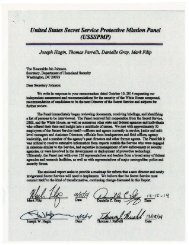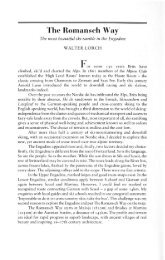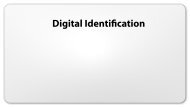85jct_catalan
Create successful ePaper yourself
Turn your PDF publications into a flip-book with our unique Google optimized e-Paper software.
q-CATALAN<br />
NUMBERS<br />
251<br />
Then we obtain<br />
z2=k;, C,-,zk(z),q-kykZ<br />
= i Ck-]Zk(Z)kq-k ,F, c, 4(qkz)‘(qkzh<br />
k>l<br />
c, ~1 c[- ] qk”- ”<br />
’ > -f(Z),,.<br />
Rewriting<br />
(2.1) as<br />
z=C,z(l-z)+ 1 C,._,Zn(Z),<br />
II>2<br />
gives CO = 1 and another expansion of z2. Comparing<br />
coefficients leads to<br />
C n-1= 1 c&qck+ “’<br />
k+i=n-- 2<br />
C n+l = f: CkCn-kq(k+‘)(n-k), co= 1. (2.2<br />
k-0<br />
Writing<br />
z’,(q) = q(k,(q-1) (2.3<br />
we obtain the simplest possible q-analog of the classical recurrence relation<br />
(1.2) for the Catalan numbers<br />
Z;,,+,= .f qkZi,&-k.<br />
k=O<br />
(2.4)<br />
The first values are<br />
c,=c, = 1, c2=1+q, c,= 1 +q+2q2+q3,<br />
c,=1+q+2q2+3q3+3q4+3q5+q6.<br />
A simple explicit formula like (1.1) is not known. The analog of the second<br />
expansion (1.5) leads essentially to the same q-Catalan numbers<br />
(2.5)








![55721335-d6fe09eb5ffdcc87dbf6c3f0b5bbda07d2261e98[1]](https://img.yumpu.com/56533583/1/186x260/55721335-d6fe09eb5ffdcc87dbf6c3f0b5bbda07d2261e981.jpg?quality=85)








